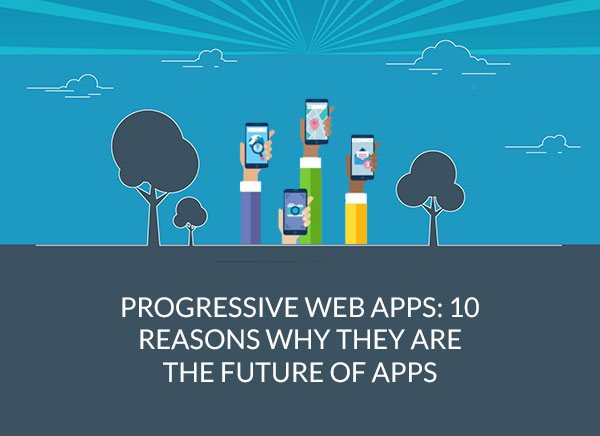
Is this the future of apps - a guest post from Andrew Gazdecki
Note from Keren: This is a 2 part post from Andrew Gazdecki, the founder and CEO of Bizness Apps. The first part is about Progressive Web Apps – and then below is an infographic outlining what customers want from business apps.
Progressive Web Apps – what are they?
Progressive Web Apps (PWAs) are the next evolution of the branded app experience. It’s the next frontier that is just beginning to be nudged into the mainstream. A supplementary force to any business’s existing mobile app experience. The 10 Reasons Why Progressive Mobile Apps Are The Future of Apps infographic demonstrates a variety of impactful ways that this new technology is already changing the app game.
Here are some examples:
Created by Bizness Apps: Don Carlos Taco Shop and Mission Avenue Bar
Famous ones: Starbucks and Twitter
10 Reasons Why They Are The Future Of Apps
1. PWAs are more accessible: The journey that a customer has to endure to download and use your app can be tedious. There is several steps or obstacles that a potential user has to bypass before downloading your app. Alternatively, you can access a PWA without ever having to leave your mobile browser.
2. No App Store Restrictions: One of the key reasons that PWAs are so much easier to access is there is no app store involvement. This cuts the middleman out for a frictionless experience.
3. Universal: With no app store involvement necessary and a simplistic design, PWAs are compatible with a broader range of devices and platforms.
4. Use Less Storage: PWAs can be accessed through a URL link in a browser. You can add that URL to your homepage, almost like creating a shortcut. This requires far less storage, but still connects you to the app-like experience in one tap.
5. Low Data Requirements: Similarly, Progressive Web Apps demand far less data to use. This is valuable considering users often access a branded mobile app when they are inside a store location shopping and likely using their data.
6. Shareable: Since accessing a PWA doesn’t require any sort of download and can be done through a URL link, these app-like experiences are far easier to share via a message, social media post or other means.
7. Still Access Valuable App Features: While PWAs are simpler and use less storage and data, that doesn’t preclude them from offering lots of value to customers. Some of your native app’s most popular features can be accessed through a Progressive Web App. This includes your loyalty program, push notifications and more.
8. Less Hassle, More Features: PWAs do their best to pair the functionality of a native mobile app with the streamlined access to the web. In other words, you get a lot of app features, with less of an investment of time and effort.
9. Proven To Convert: Early explorers of Progressive Web Apps have seen positive growth, particularly in improving conversion rates, reducing bounce rates and increasing time spent per visit.
10. Value: At the heart of all of these 10 reasons is one key theme: value. This has been a long struggle for app developers. You have to make an experience valuable enough to encourage the customer to spend the time taking the necessary steps to download and then use the app. With PWA’s, the value proposition is easier because there is less time and effort required by the potential user to access the app content. Today you can create a PWA with an app builder without any coding experience.
BIO:
Andrew Gazdecki is the founder and CEO of Bizness Apps, a company that helps small businesses build mobile solutions to compete with big brands. Their mobile app building platform makes it possible for everyone to create a mobile app for their business. When he isn’t helping small businesses, he is out surfing in the Pacific Ocean.

